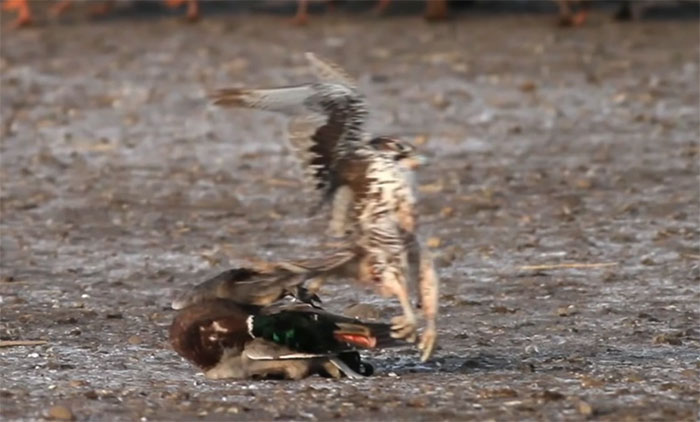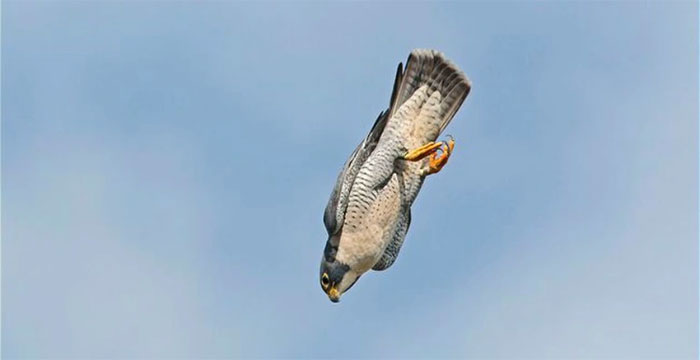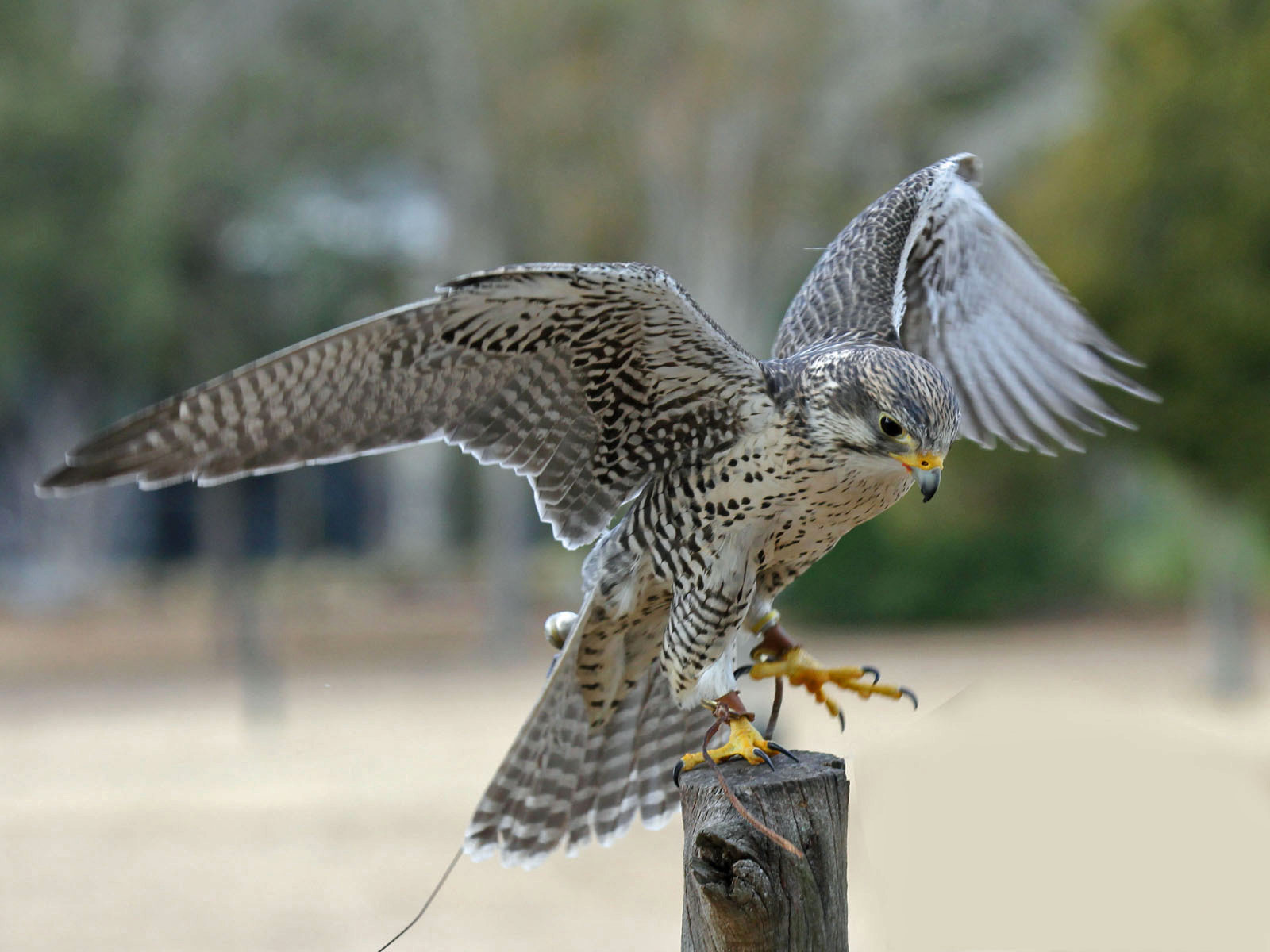The kestrel’s dive of up to 90km/h hit the target, leaving the mallard completely unable to react in time, and was quickly killed.
There is a folk saying “Fast like lightning” , implicitly affirming the incredible ability and speed of the falcon in the natural world. Witnessing the above videos, one can see how accurately this is depicted, when a steppe kestrel, although not yet mature, can easily kill a mallard with a dive in the air. Extremely high speed.
It is known that the video was recorded on the outskirts of Calgary – the southern city of Alberta, Canada, where large flocks of mallard ducks often feed in nearby fields, and attract many birds of prey to come. with the “duck buffet” . In it, it can be seen that in just a blink of an eye, a mallard of the Drake duck breed (Mareca americana) that was calmly resting, suddenly had its head torn off, then rolled to the ground. A few seconds later, it was completely unconscious, and the kestrel appeared to do the rest.

Close-up of a bird of prey digging its claws into the head of an unfortunate duck and tearing its head off.
Analyzing the video, naturalists measured the bird’s speed reaching over 90 km/h during the dive, leaving the victim completely unable to react or even notice the presence of the attacker. enemy. It is known that steppe kestrels often use this hunting method when confronting waterfowl foraging in the fields. Obviously, mallards are heavier and stronger. Therefore, the kestrel needs to minimize the animal’s resistance by delivering a direct “punch”.
The prairie falcon (Falco mexicanus) is a species of bird in the genus Falconidae, distributed in western North America. They have a long, but thin and pointed wingspan, allowing them to dive from the air at very high speeds.
Evolving in harsh desert environments with low prey densities, the steppe kestrel has evolved into an aggressive and opportunistic predator, able to hunt both mammals and large birds.
Steppe kestrels often fly very high to observe and find prey with their exceptionally good eyesight. After observing the “unlucky guy”, the bird quickly flew down and gradually increased its speed.
 The steppe kestrel is making a dive from the air. (Photo: AP).
The steppe kestrel is making a dive from the air. (Photo: AP).
With the ability to perform dives at speeds of up to 100 km/h from above to prey, the steppe kestrel is considered one of the animals with the most optimal aerodynamic design in nature. naturally, and even researched by humans to apply in jet engines. However, this is still not the absolute number that kestrels can achieve. The “king of speed” in this species is the Peregrine falcon, which can reach speeds of up to approximately 400 km/h.

The kestrel’s favorite attack location is the head or eyeballs of its prey. With the combination of extremely fast speed and sharp claws, prey will often be stunned and unconscious after the collision made by the kestrel.
After gaining this advantage, the steppe kestrel slowly approaches, using its claws and beaked beak with a sharp point (called a tooth) that can break the spine, as well as nibble the flesh of its prey.
In the wild, kestrels are near the top of the food chain, and have very few natural enemies. However, there have been cases of kestrels being hunted and killed by other large birds of prey, such as great-horned owls.





